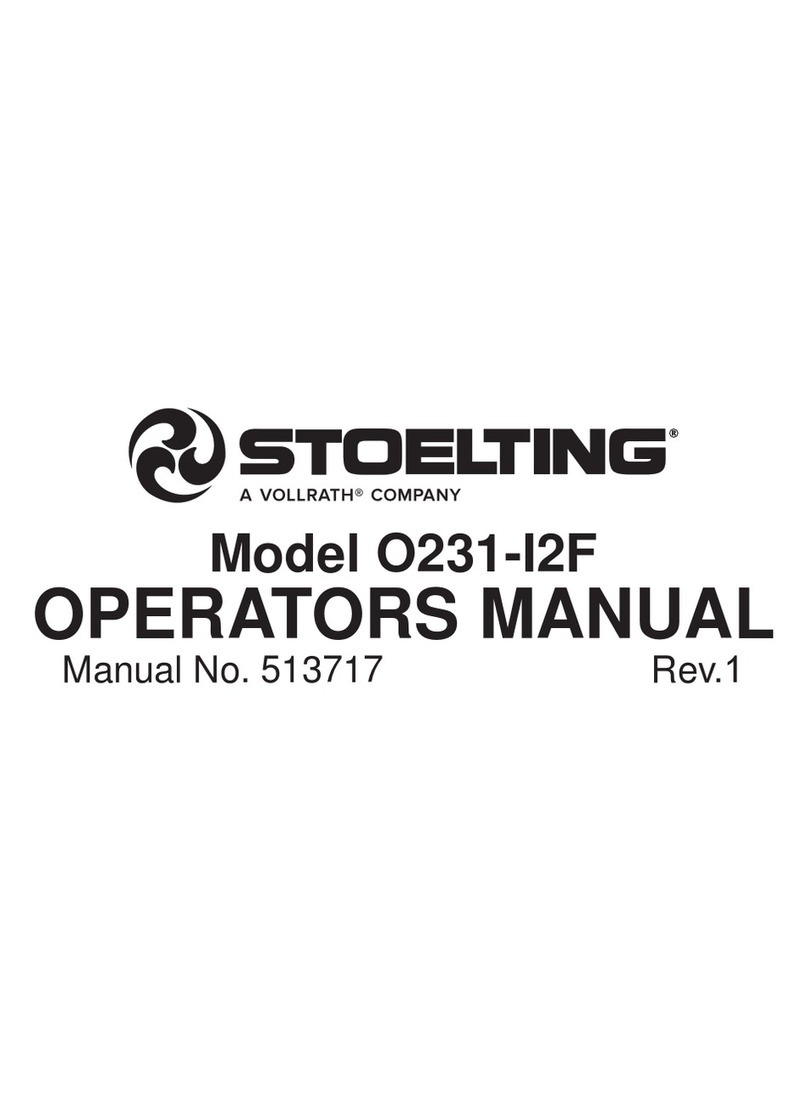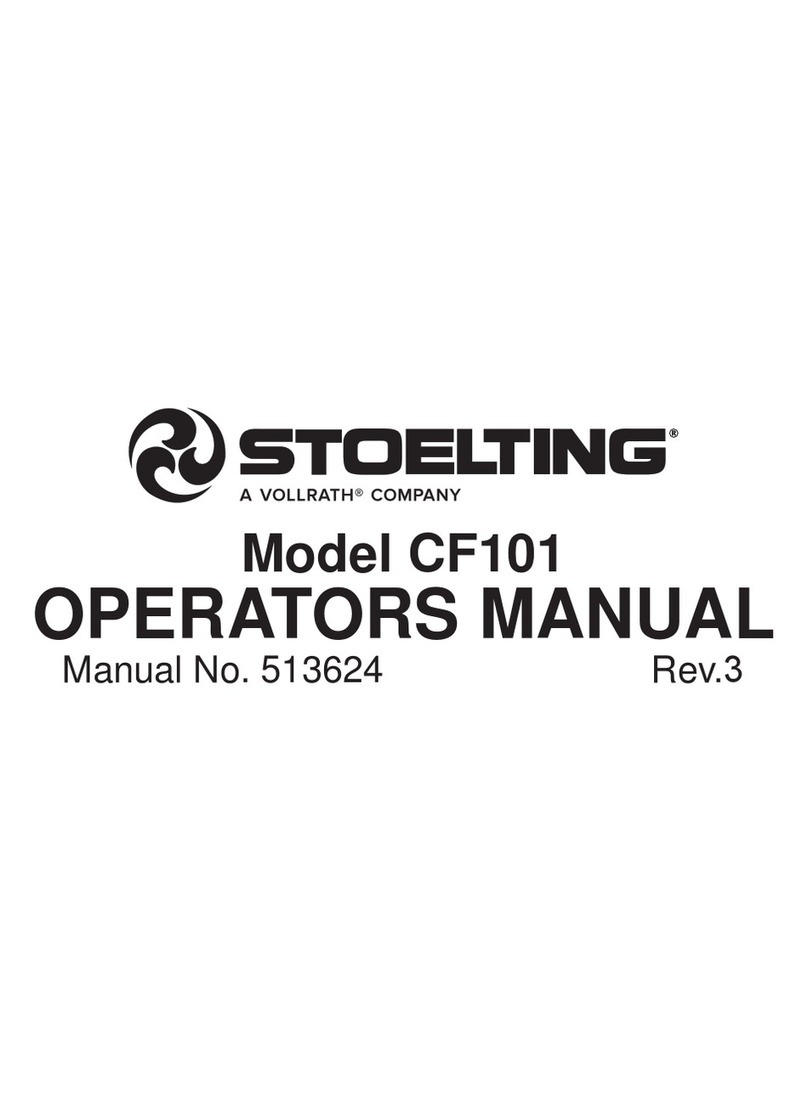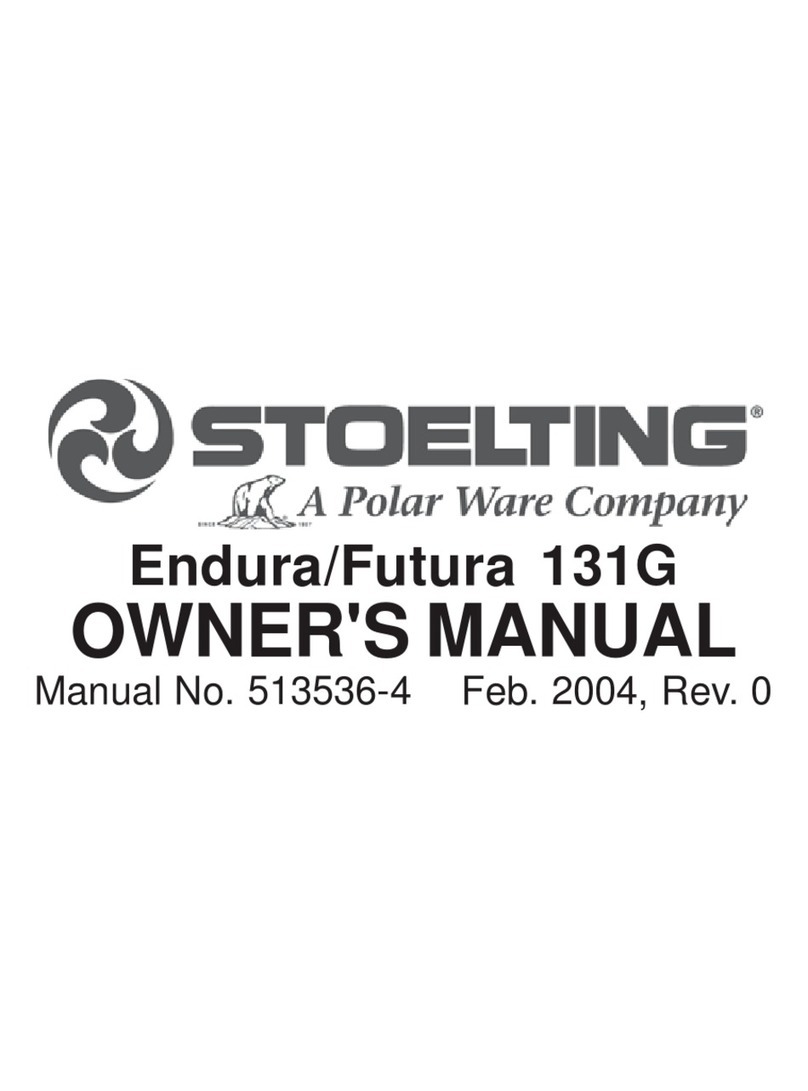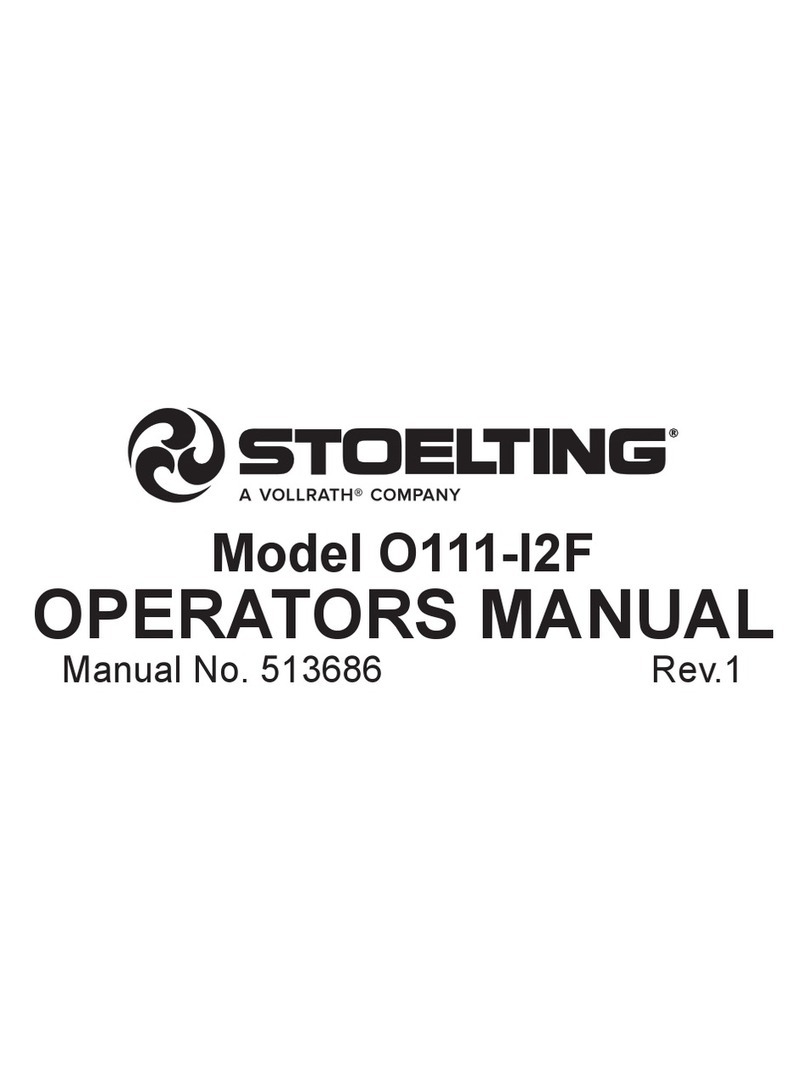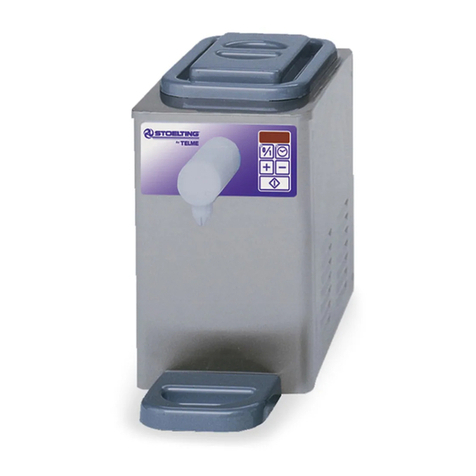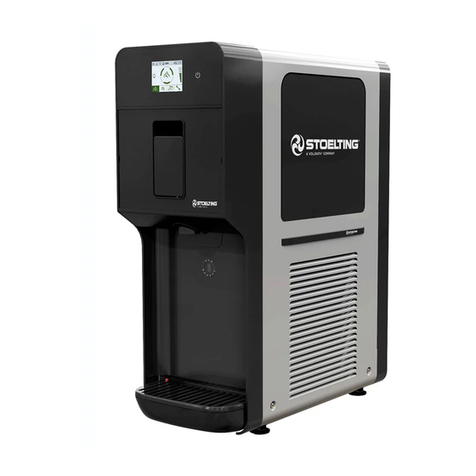
3
SECTION 2
INSTALLATION INSTRUCTIONS
2.1 SAFETY PRECAUTIONS
Do not attempt to operate the machine until the safety
precautions and operating instructions in this manual are
read completely and are thoroughly understood.
Takenoticeofallwarninglabelsonthemachine.Thelabels
have been put there to help maintain a safe working
environment.Thelabelshavebeendesignedtowithstand
washing and cleaning. All labels must remain legible for
thelifeofthemachine.Labelsshouldbecheckedperiodi-
callytobesuretheycanberecognizedaswarninglabels.
If danger, warning or caution labels are needed, indicate
the part number, type of label, location of label, and
quantityrequired along with your address and mail to:
STOELTING
ATTENTION: Customer Service
502 Hwy. 67
Kiel, Wisconsin 53042
2.2 SHIPMENT AND TRANSIT
Themachinehasbeenassembled,operatedandinspected
at the factory. Upon arrival at the final destination, the
entire machine must be checked for any damage which
mayhaveoccurredduringtransit.
With the method of packaging used, the machine should
arriveinexcellentcondition.THECARRIERISRESPON-
SIBLE FOR ALL DAMAGE IN TRANSIT, WHETHER
VISIBLEORCONCEALED.Donotpaythefreightbilluntil
the machine has been checked for damage. Have the
carrier note any visible damage on the freight bill. If
concealeddamageand/orshortageisfound later, advise
the carrier within 10 days and request inspection. The
customermustplaceclaimfordamagesand/orshortages
in shipment with the carrier. Stoelting, Inc. cannot make
any claims against the carrier.
2.3 MACHINE INSTALLATION
WARNING
Installation must be completed by a qualified
electrician/refrigeration specialist.
Incorrectinstallationmaycause personalinjury, se-
vere damage to the machine and will void factory
warranty.
Installation of the machine involves moving the machine
close to its permanent location, removing all crating,
setting in place, assembling parts, and cleaning.
A. Uncratethemachine.
B. Accuratelevelingisnecessaryforcorrectdrainage
of machine barrel and to insure correct overrun.
Placeabubblelevelontopofthemachineateach
corner to check for level condition. If adjustment
is necessary, level the machine by turning the
bottom part of each leg in or out.
C. The machine has a base gasket that must be
installed. Separate the gasket and install it with
theseamtotheback.Make suretheangledside
of the gasket is facing up.
D. Correctventilationisrequired.Therightsideofthe
machine is the air intake and left side is the
discharge. Both sides must have 3" clearance.
CAUTION
Failuretoprovide adequate ventilationwillvoid war-
ranty.
E. PlacetheMainFreezerPowerOff/Onswitchinthe
OFFposition.
F. Connect the power cord to the proper power
supply. The plug connected to the machine is a
NEMA 6-20P. Check the nameplate on your
machine for proper supply. The unit must be
connected to a properly grounded receptacle.
Theelectricalcordfurnishedaspartofthemachine
hasathreepronggroundingtypeplug.Theuseof
an extension cord is not recommended, if
necessaryuseonewithasize12gaugeorheavier
with ground wire. Do not use an adapter to
circumvent the grounding requirement.
WARNING
Do not alter or deform electrical plug in any way.
Altering the plug to fit into an outlet of different con-
figuration may cause fire, risk of electrical shock,
product damage and will void warranty.
Figure 2-1 Space and Ventilation Requirements
